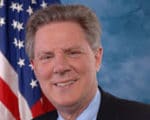FCC Chairman Ajit Pai has created an internal task force designed to continue the Commission’s work in support of the restoration of communications services in the Texas Gulf Coast, Florida, Puerto Rico and the U.S. Virgin Islands — areas severely impacted by three strong hurricanes.
The task force launches with an emphasis on addressing the challenges facing Puerto Rico and the U.S. Virgin Islands.
Communications remains severely impaired in the U.S. Caribbean territories. As of midday Thursday (10/5), some 84.6% of cell sites are out of service in Puerto Rico. This marks a slow improvement since Hurricane Maria’s devastating arrival and exit from the commonwealth.
In the USVI, which is comprised of St. Thomas, St. Croix and St. John, some 60.3% of cell sites are out of service. However, all 9 cell towers on St. John remain out of service.
“As we shift from short-term incident management to a longer-term recovery phase, it makes sense to adjust the structure of the FCC’s response,” Pai said. “In the weeks and months to come, the Commission will be confronting a wide range of storm-related issues that fall within the jurisdiction of numerous bureaus and offices. It is critical that we adopt a coordinated and comprehensive approach to support the rebuilding of communications
infrastructure and restoration of communications services. The Hurricane Recovery Task Force will allow us to do just that.”
The task force will be chaired by Michael Carowitz, Special Counsel to Chairman Pai, and
comprised of representatives from bureaus and offices throughout the agency.
As the work of the task force begins, the FCC will continue response efforts in support of the Department of Homeland Security and Federal Emergency Management Agency (FEMA) under the National Response Framework. Through this mission, the Commission helps coordinate requests for assistance from communications providers, compiles and analyzes data on the operational status of communications services, and deploys personnel at the request of FEMA.
ROSENWORCEL: ‘YOU’RE WELCOME’
The announcement by Pai of the formation of a Hurricane Recovery Task Force at the FCC was immediately embraced by Democratic Commissioner Jessica Rosenworcel.
After all, she pushed for it.
In a communiqué released Sept. 5 by the Commissioner after the devastating floods along the Texas Gulf Coast following Hurricane Harvey, Rosenworcel said, “As we begin to assess Harvey’s horrible toll on human life and property, we will need to take stock of what worked, what didn’t, and how we can improve when it comes to our communications infrastructure.”
Today, she said, “I welcome the news that the Commission is forming a Hurricane Recovery Task Force. I appreciate that the Chairman has listened to my recommendations and decided to put in place a broader effort to review the scale and scope of the damage done to essential communications infrastructure this hurricane season. We need to understand what went wrong, what went right, and how we can be better prepared in the future. I look forward to the report that results from this effort and sincerely hope it includes on the ground research and Commission hearings.”
PALLONE PLEADS TO PAI FOR WIRELESS TOUGHNESS REVIEW
Pai’s announcement of the creation of an FCC Hurricane Recovery Task Force came just hours after the release of a letter sent to the FCC Chairman by a new nemesis — Energy and Commerce Committee Ranking Member Frank Pallone Jr., a New Jersey Democrat.

Pallone’s letter urges Pai to conduct a Commission-level review of the resiliency of the nation’s wireless communications networks and the effect of the Wireless Network Resiliency Cooperative Framework in the aftermath of Hurricanes Harvey, Irma, and Maria.
Pallone in 2016 worked with the wireless industry to create the Wireless Network Resiliency Cooperative Framework, which was developed to strengthen communications networks during emergencies. The Framework includes requirements for making roaming and mutual aid arrangements available during a disaster, so that consumers can be connected even if their provider is down and, among other things, allows the FCC to publish wireless network outage data during disasters to give the public and officials a snapshot of the problematic areas.
“During natural disasters, people depend on networks to call for help, monitor the status of loved ones, and coordinate restoration efforts afterward. And, while much has been done to strengthen the resiliency of these networks, more is clearly needed,” Pallone said. “Given the recent devastating hurricanes, the FCC has an obligation to review the state of our communications systems, the resilience of our 911 systems, and whether the Framework lives up to its potential.”
The Pallone-drafted “SANDy Act,” which was passed by the House of Representatives on Jan. 24, would add communications network operators to the list of essential service providers that have access to a disaster area in an effort to address rebound outages. Such outages occur when network operators do not receive priority access to disaster zones to refuel the networks’ backup generators.





